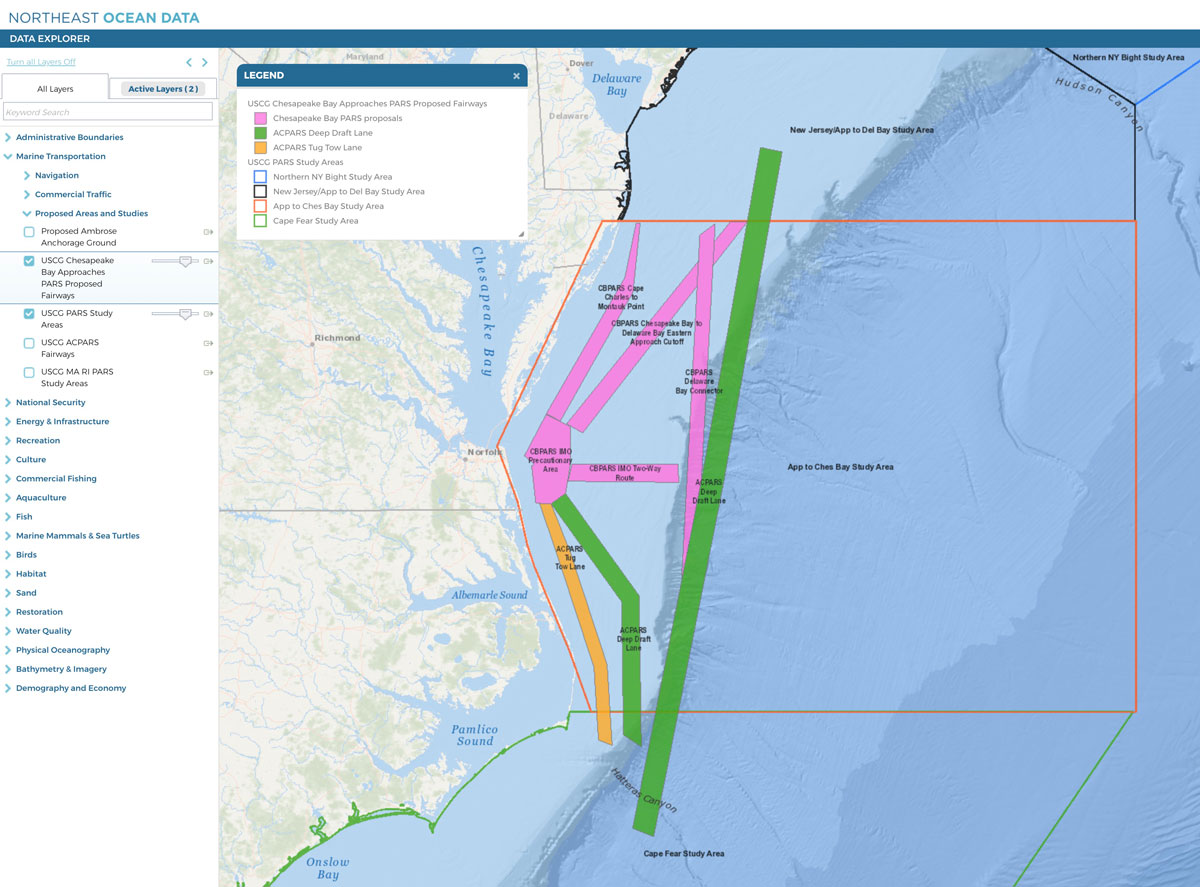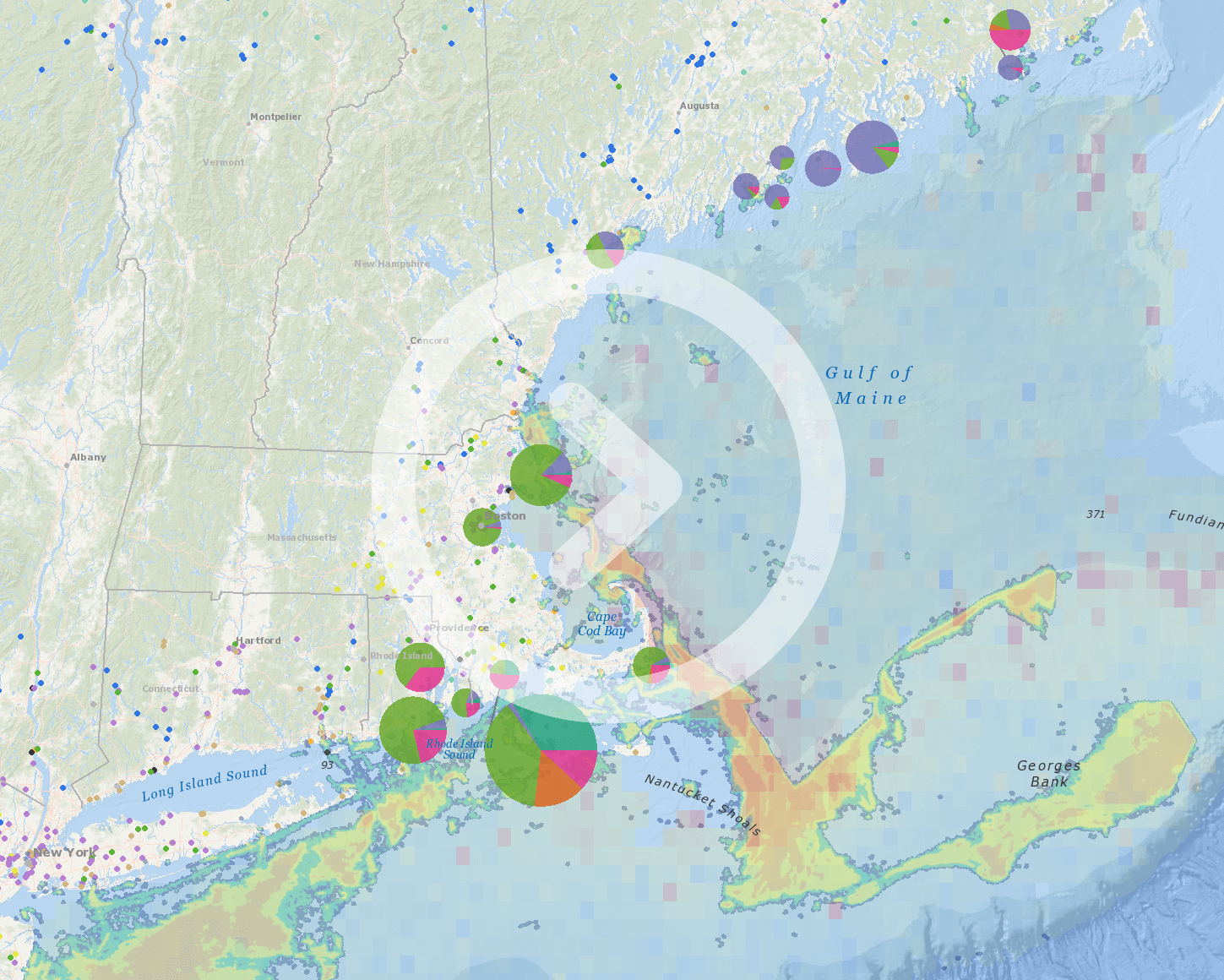A pilot boat heading for an outbound ship from Chesapeake Bay.
The U.S. Coast Guard (USCG) has announced the availability of a draft report for its Port Access Route Study (PARS) for the Approaches to the Chesapeake Bay. The study was launched in November 2019. The Coast Guard is seeking comments on the report’s contents, proposed routing measures, and development. Members of the public may obtain the report, its supporting documents, and instructions for submitting comments from the Federal Register website. Comments and related material must be submitted on or before July 16, 2021.
A new map layer from the report is now available on the Northeast Ocean Data Portal. It shows the network of shipping safety fairways proposed by the report to accommodate vessels navigating to and from the Chesapeake Bay and around the Virginia offshore wind energy lease area.
Users can access the layer in the Data Explorer by selecting Marine Transportation > Proposed Areas and Studies. In the same category, users can find the USCG PARS Study Areas layer showing the Chesapeake Bay study area, as well as a USCG ACPARS Fairways layer showing routes that extend along the East Coast, connect to, and may be modified by the proposed new Chesapeake shipping corridors. The Portal’s Coast Guard Proposed Actions page provides access to maps, data, and information for this and other recent USCG studies.
PARS are the means by which Coast Guard program managers determine the need to establish traffic routing measures or shipping safety fairways to reduce the risk of collision, allision and grounding, and their impact on the environment, increase the efficiency and predictability of vessel traffic, and preserve the paramount right of navigation while continuing to allow for other reasonable waterway uses. The study analyzes current routing measures around the approaches to Chesapeake Bay and proposes an adequate way to manage the forecasted maritime traffic growth, as well as the co-dependent use of the waters in support of future development.



